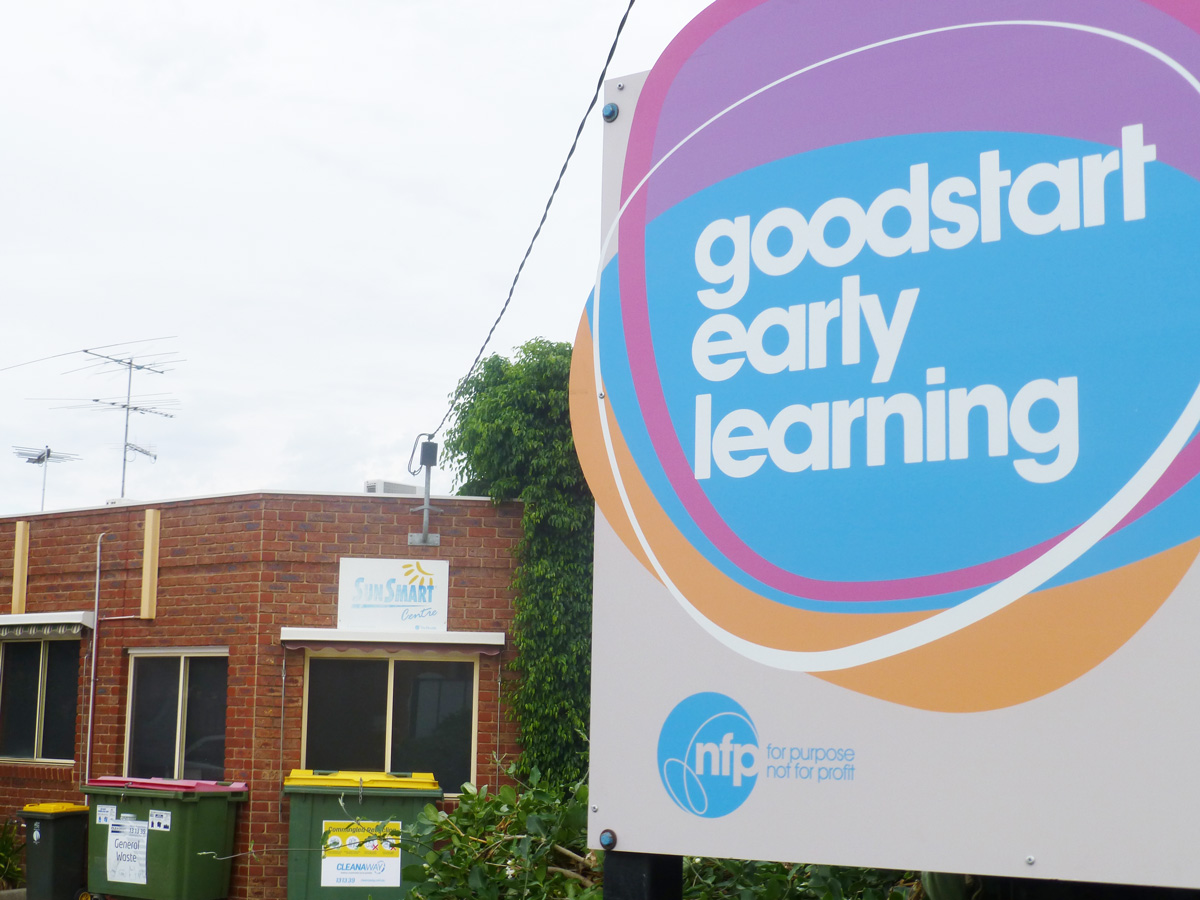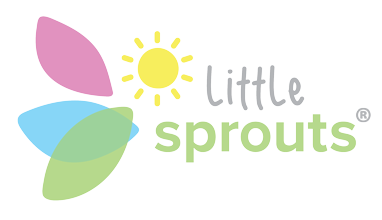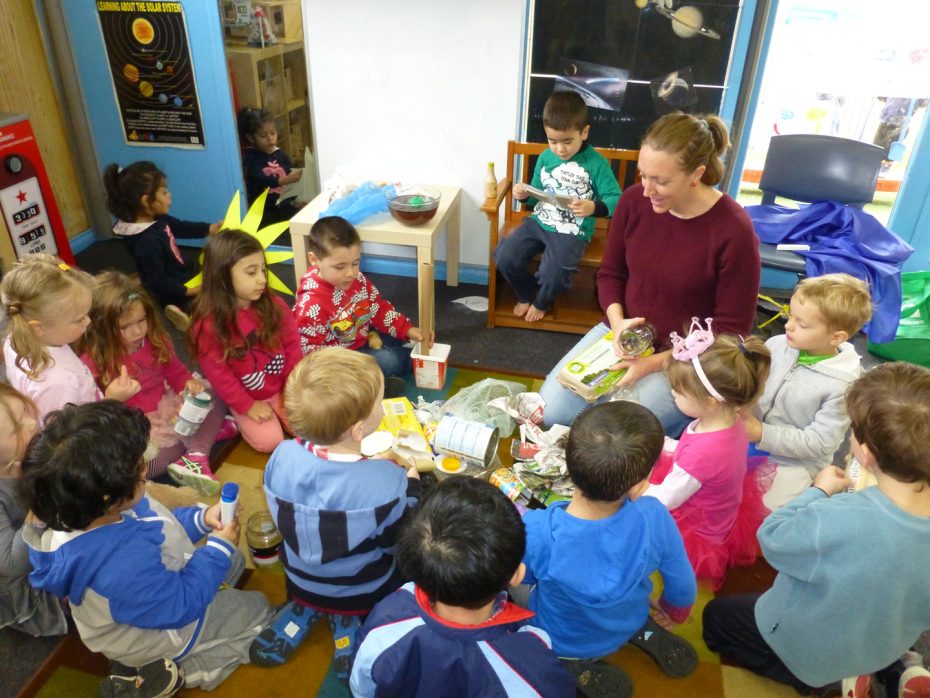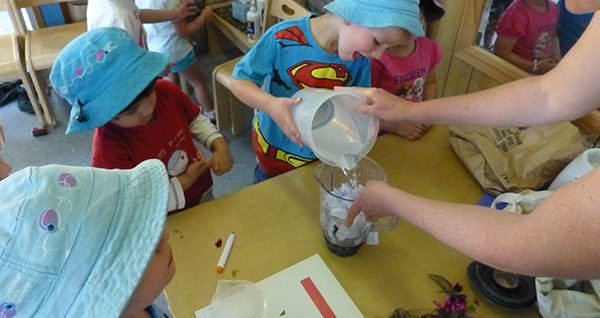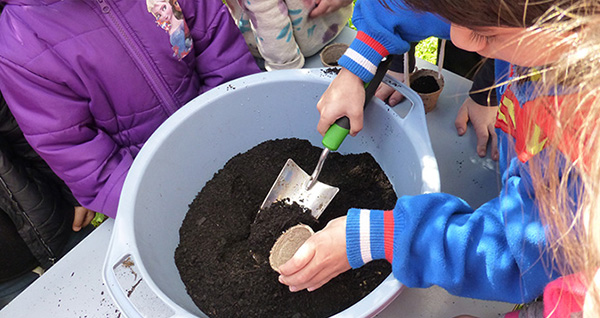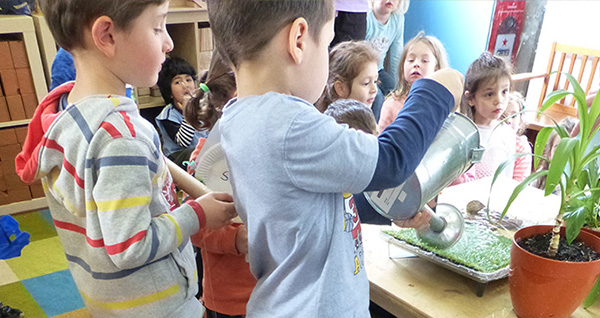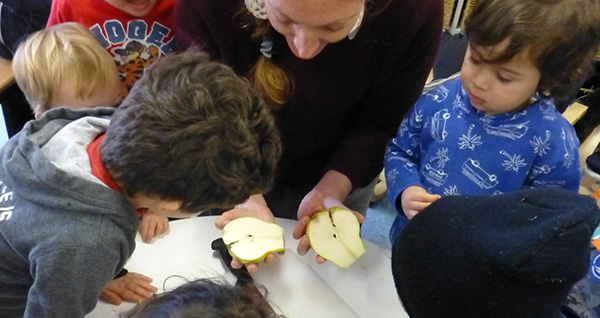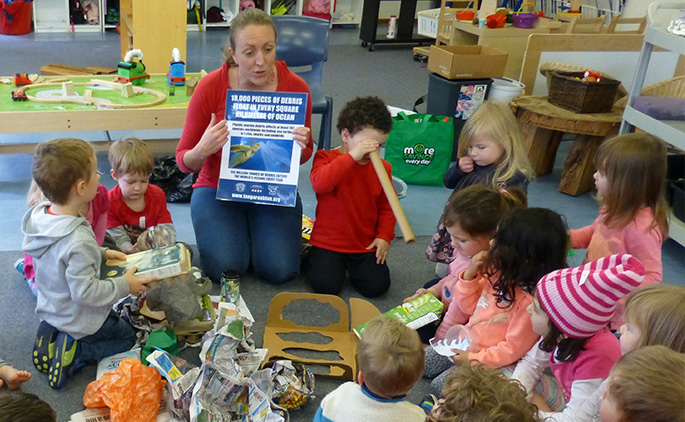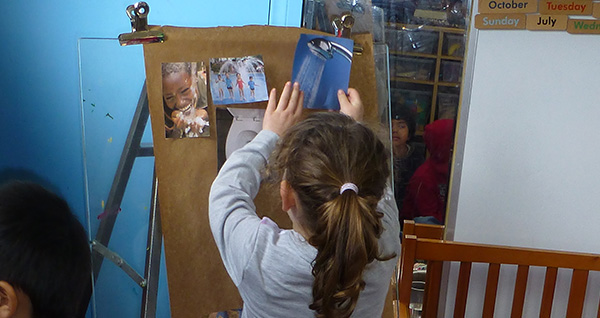Little Sprouts Program top 10 tips for recycling right in childcare centres
Waste management is not simple. I am not saying this to deter you but rather to highlight that there’s a lot involved. If your current waste and/or recycling practices aren’t working for your early learning centre or the environment, check out the Little Sprouts Program top 10 tips below.
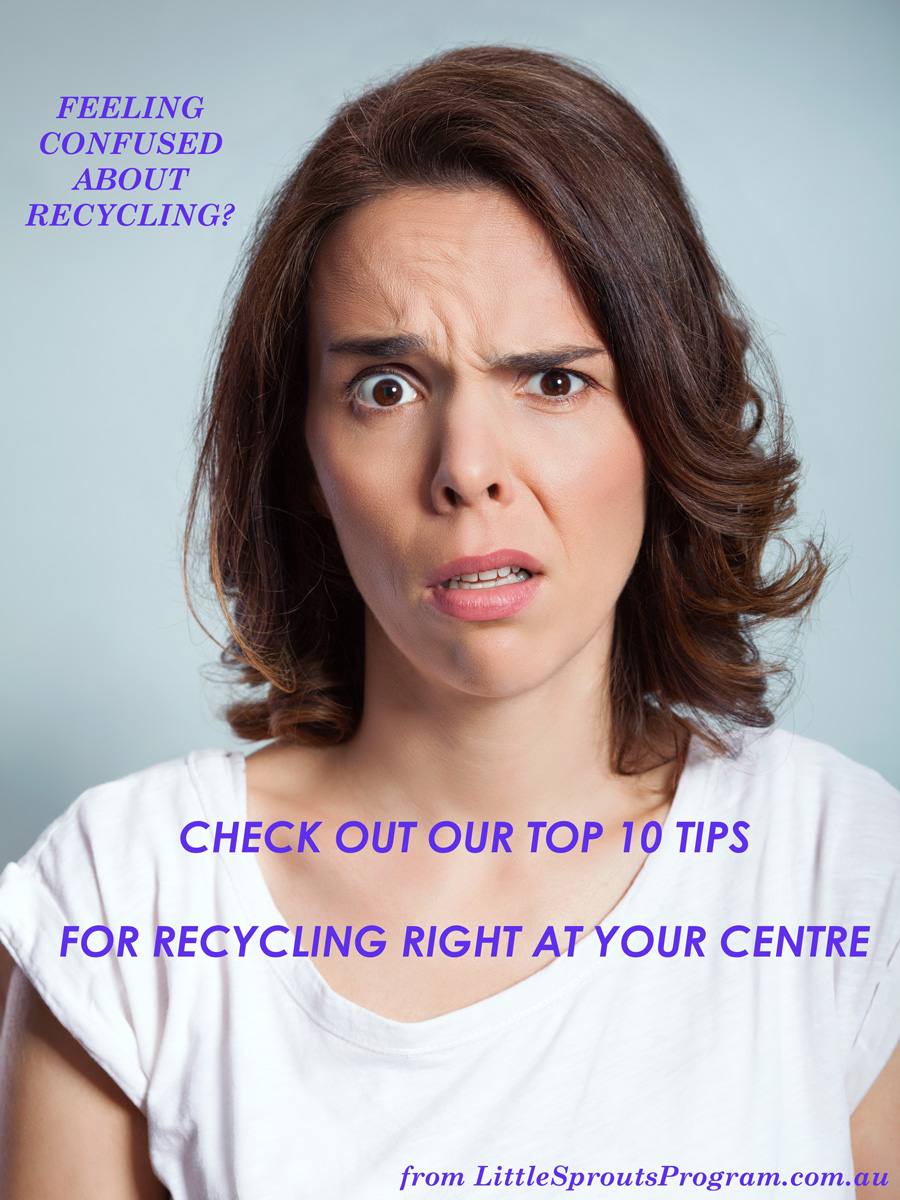
1. Explore your existing waste management infrastructure and practices
Before making any improvements it’s important to have a look at what’s in place already. What’s working? What’s not working? Ask yourself:
-
- Where and how is waste being collected throughout your centre? Go through your centre and identify the type and amount of bins in each room and in the outdoor play areas. Take photos to keep a record. It’s ideal to do this later in the day, like after lunchtime. This is an ideal time to seek feedback from educators and children on what is and isn’t working.
-
- Who is responsible for emptying the bins from each room daily? Is it the staff, cleaners or a combination of both? When are the bins emptied e.g. after lunchtime or at the end of each day?
- What type of disposal bins do you have outside? Locate your billing information to check what size and type of bins you have. Perhaps you use a private waste contractor, a local Council service or combination of both. When are your bins picked up – what days and how many times a week? What colour are the bins? How much do you pay for your existing services? Check the billing information with the bins and pick-ups your centre receives to make sure you are getting the service you are paying for. Take photos to keep a record. Notify your waste service provider of any issues.
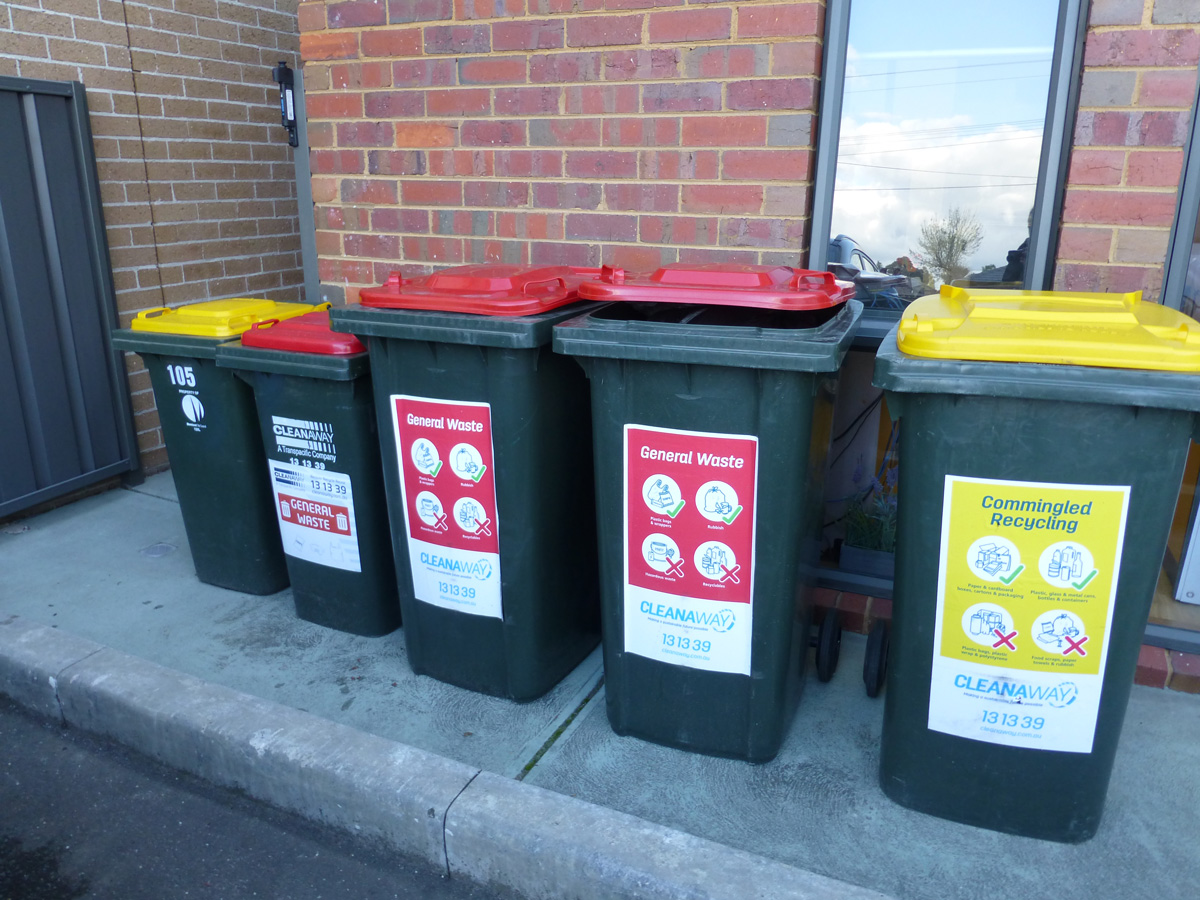
Explore the current waste management practices and infrastructure inside and outside your centre
2. Know how much waste your centre is producing
It is important to have baseline information on how much waste your centre produces so you know if your efforts are successful over time. You should conduct an audit before making any major changes, then again 3–6 months after changes have been implemented.
Conduct your audit in the late afternoon before your bin pick-up days (after all of the rubbish throughout your centre has been emptied in the disposal bins outside). We conduct our Little Sprouts waste audits at centres before all bin pick-ups over the period of a week. Make sure you wear gloves and suitable clothing. There are two ways you can tackle this:
-
- Check how full your bins are outside before each pick-up day. Take photos. As you now have information on the size of your bin (from tip 1) you can calculate the volume of waste being produced by your centre over a week. Is there excess rubbish that can’t fit in the bins?
- Weigh and count the number of bags of rubbish (full, ½, ¼ or empty). We use a fish scale to weigh bags during our centre waste audits. You can purchase these scales from fishing or camping stores. Having at least two people involved in this activity is recommended. Be careful with lifting and find a suitable place to put the garbage bags while you are conducting your audit. If you have a recycling bin, empty the contents out into a bag and weigh the bag/s. Place the items loose back into the recycling bin.

How much waste is your centre producing?
3. Understand the type of waste your centre produces
If half of the children at your centre are in nappies, your waste needs are going to be different to a centre with no children in nappies. Having an understanding of the different types of waste produced by your centre enables targeted actions to be put in place to manage these items effectively.
How much of your waste could be recycled? We would recommend doing this over the period of a week (with tip 2). This can be a messy business but it is worth it in the long-term, I promise. If you don’t feel comfortable with this process, Little Sprouts can come to the rescue with our specialised waste audit services.
If you’re going to soldier on, let’s begin… With gloves on, open the garbage bags and observe and record the different waste material types – plastic, paper and cardboard, metal, rubber, green waste, food waste, glass, wood, cloth and other items like nappies that may be a combination of several materials.
Try to be as specific as you can with noting the items and frequency these items are observed e.g. tissue boxes, wet wipes packets, office paper, drink bottles etc. Do a visual tally of these items. If you come across a nappy bag don’t open it; just make a note of how many nappy bags you observe.
For items in the recycling bin, empty these onto the ground (away from wind) to count. Using a tarp will help with sorting and keeping the area clean. Also note down and take photos of any items found in recycling that shouldn’t be there as well as items in garbage bags that could be recycled. This will help with educating staff and children (see tip 5).
What type of waste is your centre producing?
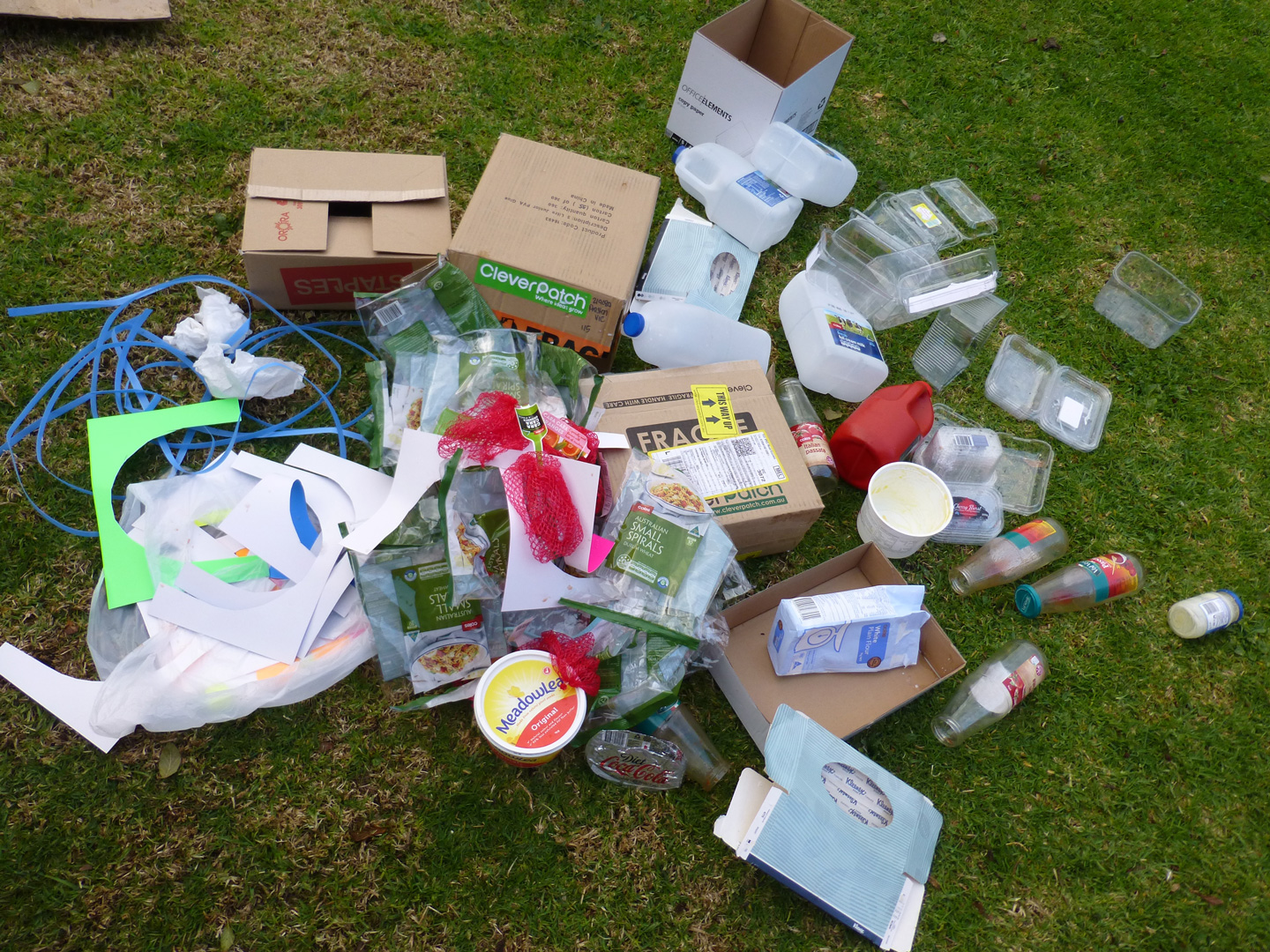
4. Simplify your waste service
Many centres have a combination of waste collection services e.g. private waste contractor and Council. This can make things difficult for two key reasons:
-
- there will likely be differences between services on what items they can recycle
- you will most likely have several alternate pick-up days for your different waste services during the week, leading to extra work for staff and an information overload.
Where possible stick to one main waste service provider. Choose pick-up days and frequencies that will meet your centre’s waste needs. Make sure all staff at your centre are aware of your waste service provider and pick-up procedures.
5. Get educated so you can make better choices
The provision of improved waste management infrastructure alone will not change recycling behaviours for the majority of centres. Infrastructure needs to be complemented by effective waste and recycling education.
One of the reasons waste management isn’t easy is that different waste service providers recycle different items. Cleanaway recycles different items to Moreland City Council; and Moreland City Council will likely recycle different items to another council in Victoria. But how are we supposed to know what we can and can’t recycle? This is why it is so important to know who your waste service provider is (see tip 1). Explore their website or contact their waste education team to get more information about your recycling service. Make sure items in the recycling bin are clean and free of liquid and waste like food scraps. They don’t need to be sparkling clean, just as empty as possible.
A fantastic educational resource I use is the Get it Right on Bin Night website, which has tips for recycling in Victoria. Try to engage children and staff as much as possible in your efforts to improve recycling at your centre. To help with education, try exploring the following topics:
-
- What is recycling?
-
- What can we recycle at the centre? Is this different from what can be recycled at home?
-
- What items can’t go into the recycling bin at the centre?
-
- What colour are our centre bins for general waste and recycling? Is this different from our bins at home?
- What materials is our rubbish made of e.g. plastic, paper, cardboard? What type of materials can we recycle? What other impact can these materials have on our environment?
We all know the 3 R’s – Reduce, Reuse, Recycle. I also like to include Refuse which looks at how we choose products and services. Recycling is an important part of good waste management practices but it should be used as a last resort after Refusing, Reducing and Reusing our waste. Are there policies or procedures you can put into place to reduce the amount of waste created by your centre in the first place?
Little Sprouts offers incursions as well as professional development opportunities for staff so if you need a helping hand with waste education, please get in touch.
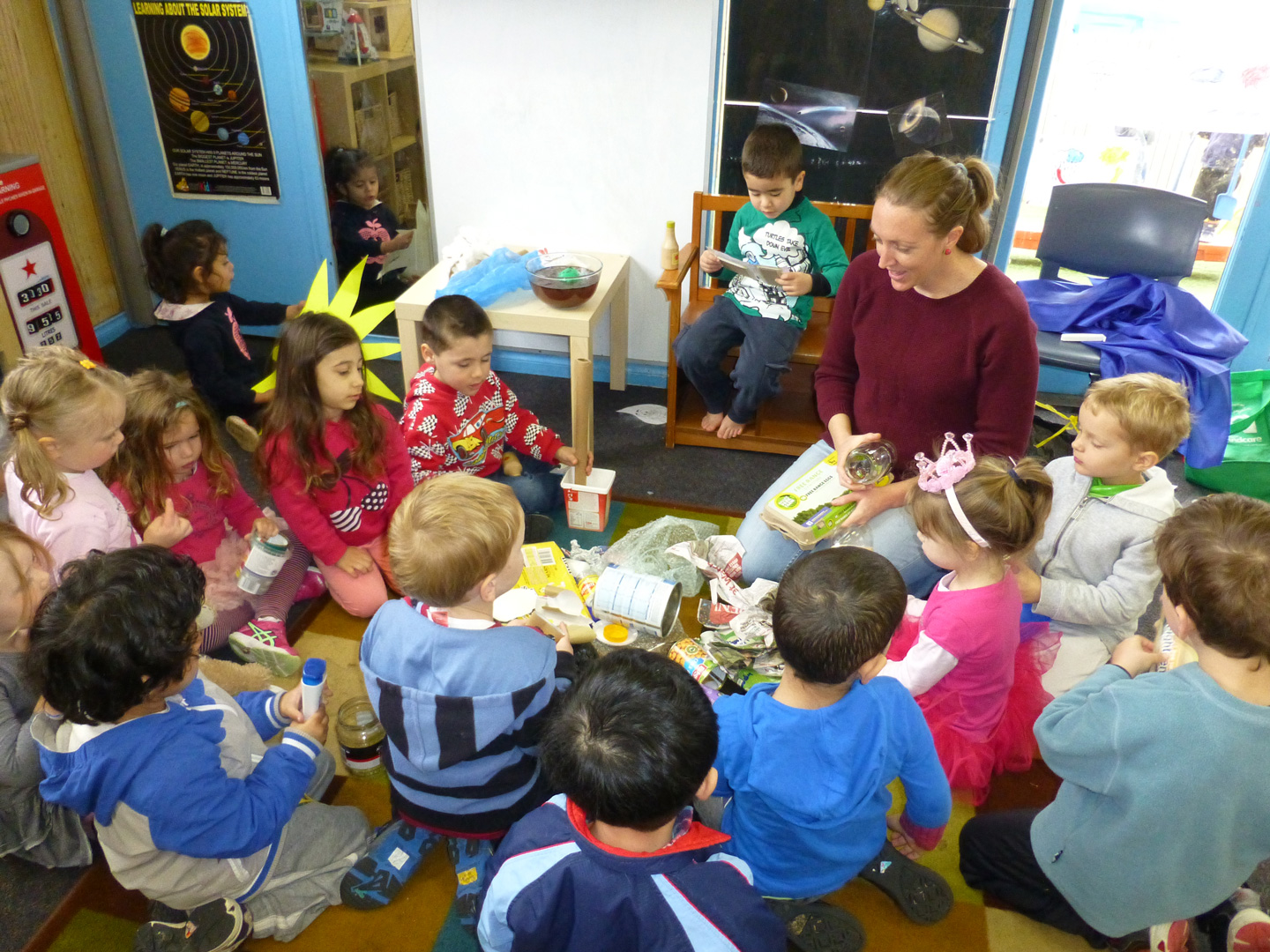
Little Sprouts incursions are a great way to engage children in learning about waste and recycling
6. Be consistent
I once went to a centre where the colour of the recycling bin was different in each of the rooms from toddler to kinder. Imagine the confusion of staff and children! Be consistent with the colouring of your collection bins inside and try to match these with your bins outside.
The most common colours (of bin lids) for different types of waste are as follows:
-
- red – general waste
-
- yellow – comingled recycling
-
- blue – paper and cardboard recycling
- light green – green/organic waste.
You may find these colours vary depending on your centre’s waste service provider.
If you are looking to purchase new bins for your rooms I would recommend Eco Bin. I’ve observed these bins in action and they are very effective at supporting recycling efforts at centres. You can also use the bins that you have and just add signage. Sustainability Victoria has a fantastic, free signage library that you can utilise.
Eco Bins help to make recycling easier for staff and children at early learning centres
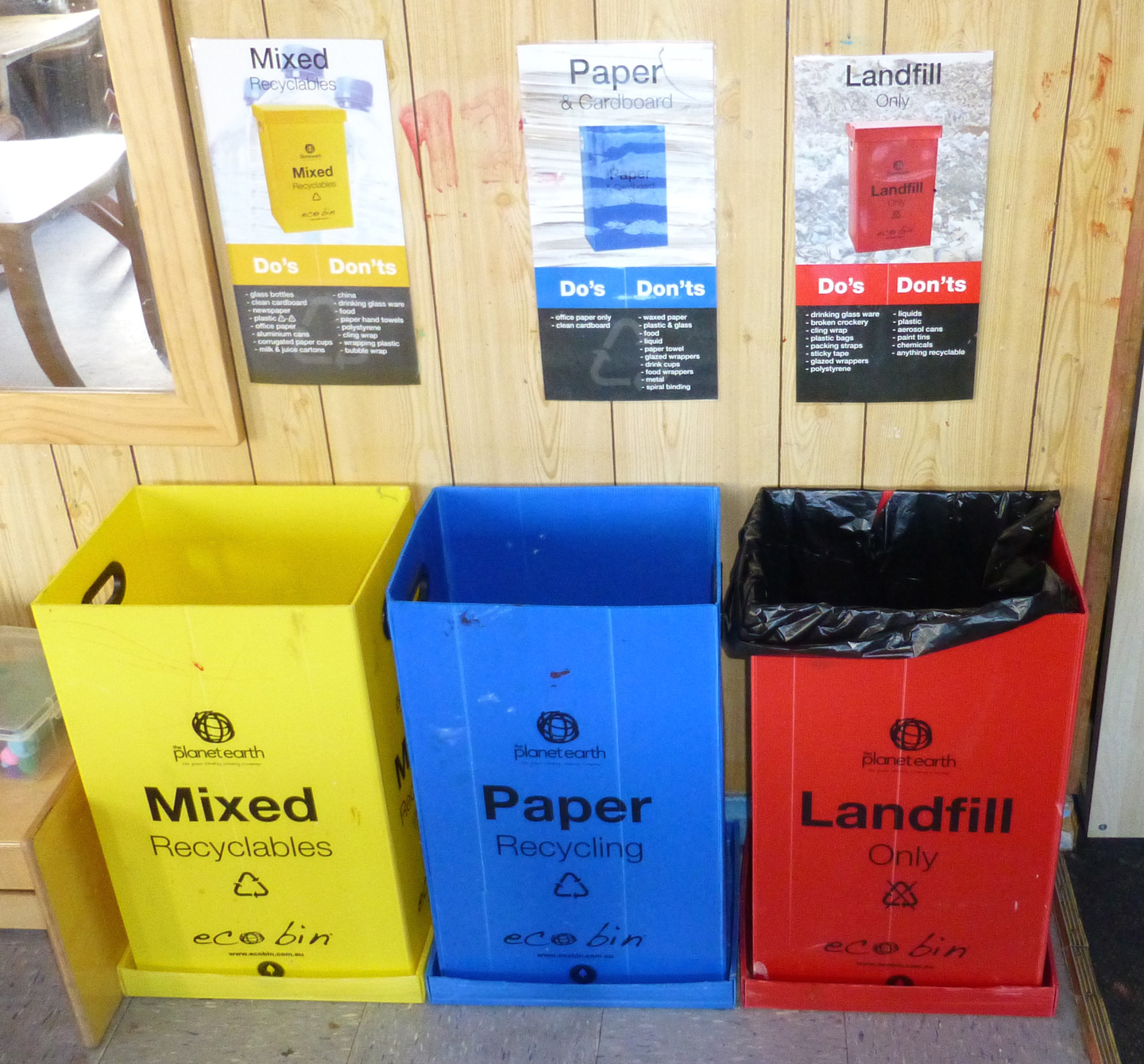
7. Avoid the use of bin liners and lids in your recycling bins
Recycling should be done with items loose and clean. Having no lid on recycling collection bins helps children to learn from others, and staff to be able to observe contamination as it happens and address the source of the issue. You can empty your recycling bin items directly into your disposal bin outside. If you dispose of your recyclables in a plastic bag or bin liner they will not be recycled.
When implementing recycling practices you need to consider your centre standards and health and safety guidelines. You know your centre best. As long as bins are emptied regularly and remain hygienic, this should meet health and safety standards.
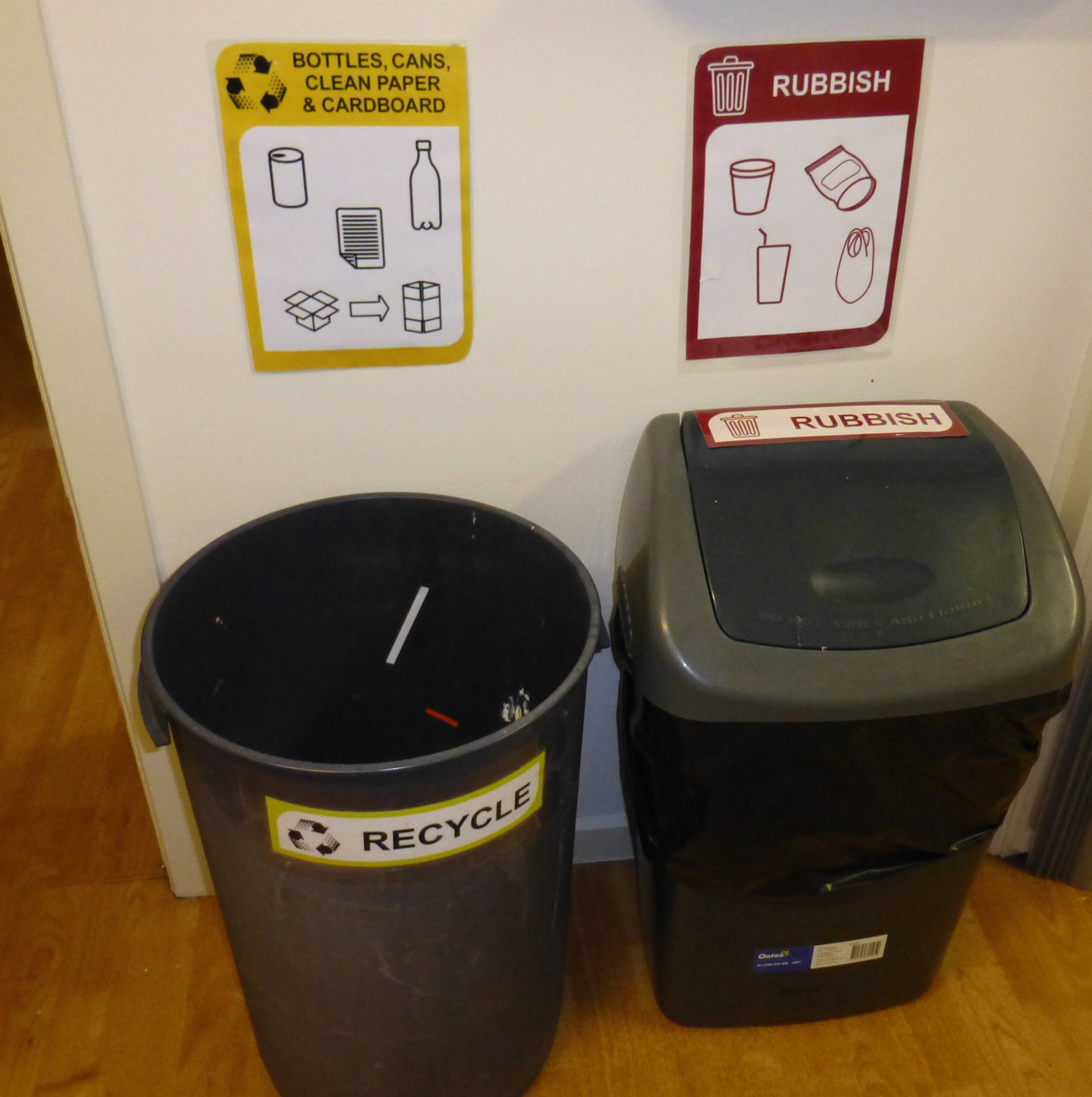
Practice recycling items loose without a plastic bin liner and avoid the use of lids on recycling bins
8. Compost your food scraps
Food waste makes up 48% of the average garbage bin in the Moreland City Council region in Victoria, so any diversion of this material away from landfill is significant. Compost your fruit and vegetable scraps to reduce your centre’s general waste. You can also collect and dispose of toilet rolls, paper towels or green waste like leaves into your compost.
However, don’t try to introduce recycling and composting at the same time. Tackle one and then the other to ensure everyone gets the education and support they need.
Goodstart Early Learning Glenroy Pascoe Vale Road compost their food scraps to reduce waste going to landfill
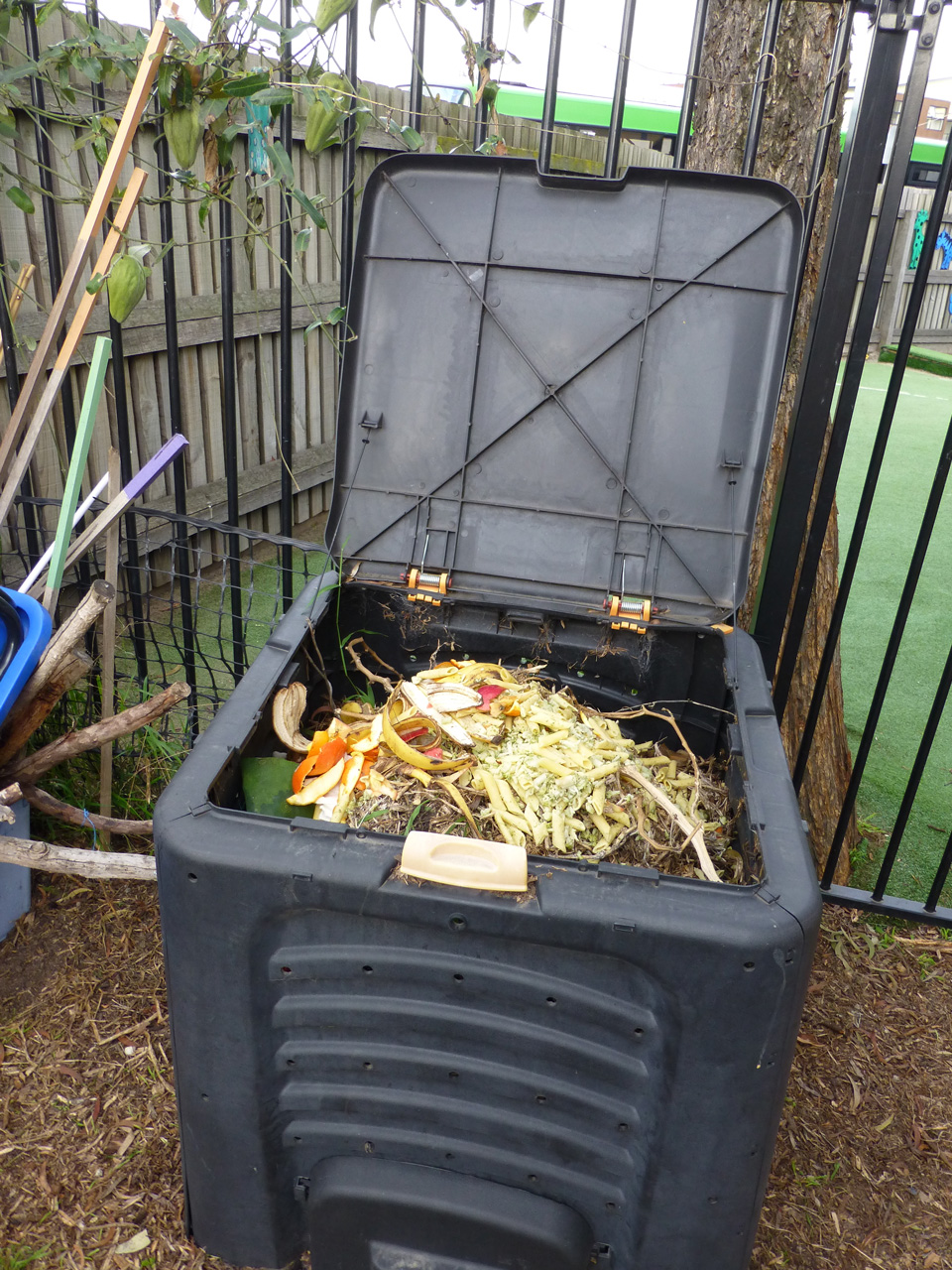
9. Involve your cleaners
It is important to consider cleaners’ involvement when planning recycling at your centre – such as how they collect and dispose of your waste. If they are aware of and confident in meeting your recycling procedures, they will play a valuable role in contributing to its success. Some issues with cleaners may arise from a lack of their awareness and knowledge about recycling. Approach your cleaners and their management team to see how you can help support each other. Making your waste and recycling procedures consistent and simple will help cleaners better support your efforts.
10. Be patient
It will take time for staff to change their recycling behaviours and children to learn how to recycle. Do the best that you can with the information and resources you have and regularly assess over time to see what other improvements can be made.
Every facility is different, so there is no one-size-fits all approach to recycling in early learning centres. It’s not about getting it perfect but rather doing the best you can for the environment within the capacity of your centre right now. Doing some recycling is always better than not doing anything at all. You will get better at it over time with practice, and as staff and children gain more confidence it will simply become part of your daily practice and routine.
Having issues with waste management and recycling at your centre? Find out how Little Sprouts can help you.
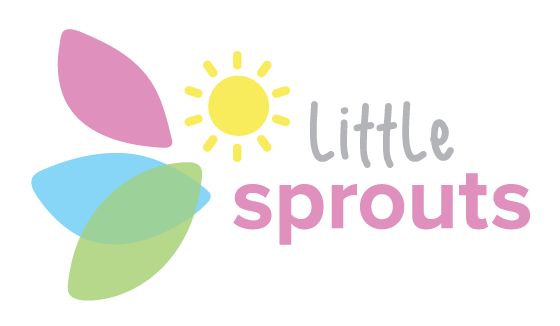
Learn how we introduced good waste management practices at six Goodstart Early Learning Centres in Melbourne
Find Out More
